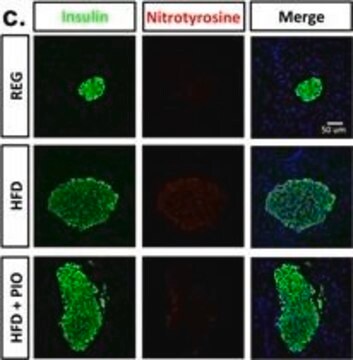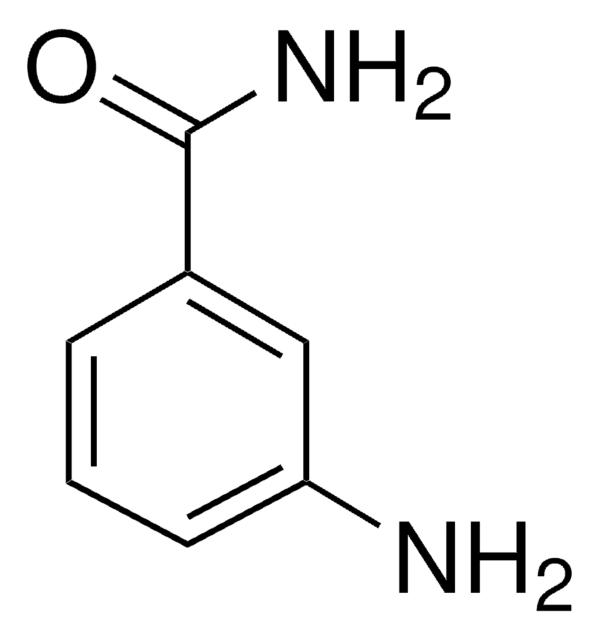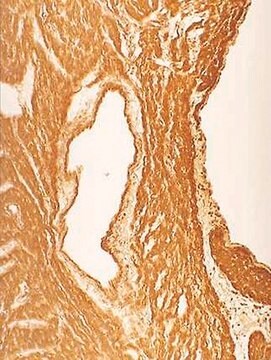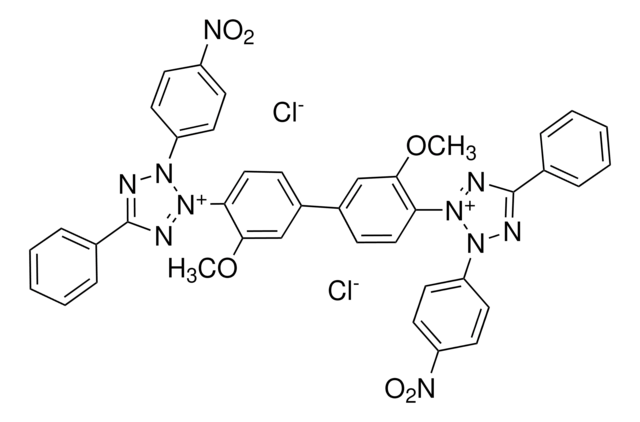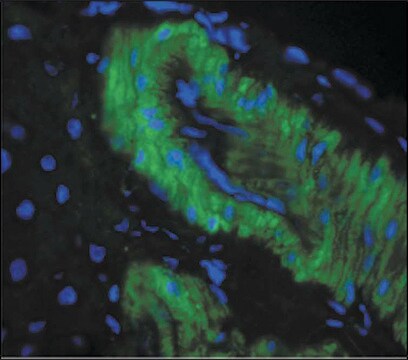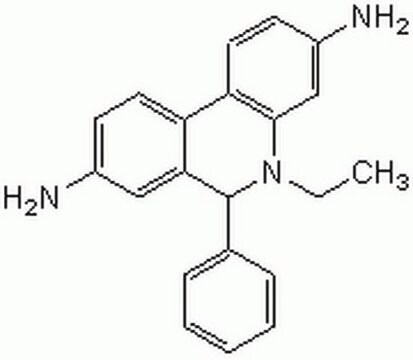N5538
Monoclonal Anti-3-Nitrotyrosine antibody produced in mouse
clone 18G4, purified immunoglobulin, buffered aqueous glycerol solution
Sign Into View Organizational & Contract Pricing
All Photos(1)
About This Item
UNSPSC Code:
12352203
NACRES:
NA.41
Recommended Products
biological source
mouse
conjugate
unconjugated
antibody form
purified immunoglobulin
antibody product type
primary antibodies
clone
18G4, monoclonal
form
buffered aqueous glycerol solution
mol wt
antigen ~55 kDa
species reactivity
wide range
technique(s)
western blot: 1:1,000 using mouse and rat brain
shipped in
wet ice
storage temp.
−20°C
target post-translational modification
nitration (Tyr)
Gene Information
human ... NOS1(4842)
Looking for similar products? Visit Product Comparison Guide
General description
3-nitrotyrosine (3-NT) is synthesized by the incorporation of nitro triatomic group (-NO2) at the third position of the phenolic ring in the tyrosine residue, in response to the production of peroxynitrite in the oxidative and nitrosative stress.
Immunogen
3-Nitrotyrosine-KLH.
Application
Monoclonal Anti-3-Nitrotyrosine antibody produced in mouse has been used in western blot analysis and immunohistochemistry.
Biochem/physiol Actions
3-Nitrotyrosine (3-NT) in tissue extracts is a marker for the determination of protein damage induced by peroxynitrite. 3-NT is used as a biomarker to determine the protein nitration, associated with various disorders. It is implicated in diseases characterized by endothelial dysfunction as in stroke, myocardial infarction, atherosclerosis and diabetes.
Target description
Monoclonal Anti-3-Nitrotyrosine recognizes 3-nitrotyrosine in most species. Protein tyrosine nitration results in a post-translational modification that is increasingly receiving attention as an important component of nitric oxide signaling.
Physical form
Solution in 20 mM sodium phosphate, 150 mM sodium chloride, 50% glycerol, and 3 mM sodium azide.
Disclaimer
Unless otherwise stated in our catalog or other company documentation accompanying the product(s), our products are intended for research use only and are not to be used for any other purpose, which includes but is not limited to, unauthorized commercial uses, in vitro diagnostic uses, ex vivo or in vivo therapeutic uses or any type of consumption or application to humans or animals.
Not finding the right product?
Try our Product Selector Tool.
Storage Class Code
10 - Combustible liquids
WGK
WGK 2
Flash Point(F)
Not applicable
Flash Point(C)
Not applicable
Choose from one of the most recent versions:
Already Own This Product?
Find documentation for the products that you have recently purchased in the Document Library.
Phytochemical analysis and biological properties of Cyperus rotundus L.
Kumar KH, et al.
Industrial Crops and Products, 52, 815-826 (2014)
Pengcheng Xu et al.
Frontiers in cellular neuroscience, 15, 804345-804345 (2022-01-04)
Mutations in a number of genes encoding mitochondrial aminoacyl-tRNA synthetases lead to non-syndromic and/or syndromic sensorineural hearing loss in humans, while their cellular and physiological pathology in cochlea has rarely been investigated in vivo. In this study, we showed that
Cardiotrophin-1 reduces ischemia/reperfusion injury during liver transplant
Aguilar-Melero P, et al.
The Journal of Surgical Research, 181(2), e83-e91 (2013)
Andrographolide Ameliorates Diabetic Cardiomyopathy in Mice by Blockage of Oxidative Damage and NF-kappaB-Mediated Inflammation
Liang E, et al.
Oxidative Medicine and Cellular Longevity, 2018 (2018)
Eugenio Barone et al.
Journal of neuroscience research, 93(11), 1728-1739 (2015-08-08)
Superoxide dismutases (SODs) are the primary reactive oxygen species (ROS)-scavenging enzymes of the cell and catalyze the dismutation of superoxide radicals O2- to H2O2 and molecular oxygen (O2). Among the three forms of SOD identified, manganese-containing SOD (MnSOD, SOD2) is
Our team of scientists has experience in all areas of research including Life Science, Material Science, Chemical Synthesis, Chromatography, Analytical and many others.
Contact Technical Service
